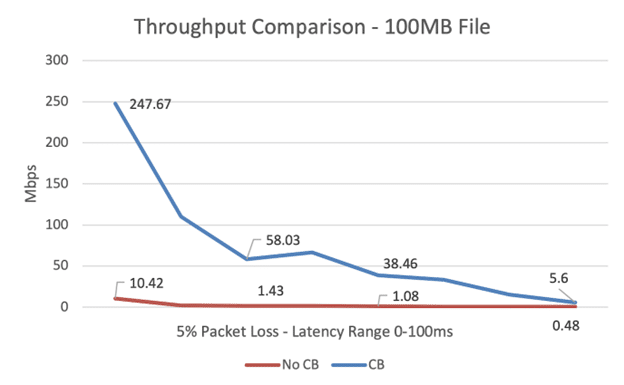In today’s IT landscape, high-speed and consistent network connectivity has become a necessity rather than a luxury. The rise of hybrid working has significantly increased network complexity for IT teams. The global pandemic also intensified the demand for robust network performance, particularly with the overnight surge in remote work and the dependence on real-time and bandwidth-intensive applications such as video conferencing and data transfer. The discussion around whether hybrid working is here to stay seems over - as a recent Axios article highlights.
Additionally, the increasingly common model of delivering everything as a service from the cloud highlights the need for proximity to data delivery points, which accentuates performance issues, especially in regions with limited broadband and mobile coverage.
Faster ZTNA Performance
In a world where employees access crucial applications from anywhere, remote access without network lag or security concerns is essential. Delivering this isn’t a utopian dream. It’s the reality promised by Cloudbrink, a revolutionary network architecture designed for the demands of today’s hybrid working landscape. It delivers network performance improvements of up to 30x for remote users.
CloudBrink’s bold 30x improvement claim was put to the test by Broadband Testing, an independent testing organization, whose findings not only corroborated their claims but revealed even more remarkable results.
Hybrid working poses specific challenges when it comes to optimizing the network. With data and applications spread across several locations, traditional remote access tools often fail to maintain consistent performance. This leads to frustrating delays, decreased productivity, and a suboptimal user experience (like video pixelation and audio dropouts in Microsoft Teams and Zoom meetings, or seemingly never-ending file transfers).
Cloudbrink solves these problems by optimizing traffic routing and minimizing latency, resulting in significant increases in network speeds.
Internet Speed Comparison
The findings from Broadband Testing more than validated the 30x performance improvement figure. In some instances, the testing substantially surpassed Cloudbrink’s 30x claimed improvement. Broadband Testing found that exceptional performance improvement was most noticeable under challenging network conditions like those noted above, where CloudBrink consistently boosted throughput and reduced transfer times. This testing not only validated CloudBrink’s conservative claims, but Broadband Testing also says it marks a significant milestone in delivering remote application access.
To illustrate the improvements they observed, Broadband Testing included the following quote in their summary report:
“From a performance perspective, Cloudbrink claims up to a 30x performance improvement, but we found in several scenarios that this figure could be readily – and hugely in some instances – exceeded, especially when network conditions (latency, packet loss etc) become more challenging. At every data point, the Cloudbrink solution increased throughput and reduced transfer time, even in perfect network conditions.”
They support this quote with the following charts: Image 1 and Image 2.


Broadband Testing also points out that their tests were in a fully secured environment. In many previous tests using VPNs, they have seen a performance loss of up to 50% due to the secure tunneling of the connection. However, with Cloudbrink, a complete Zero Trust Network Access (ZTNA) delivery model gets used, and performance is not impacted, despite the enhanced security measures in place.
Performance Not Sacrificed for Security
This point about security not sacrificing performance is another important feature of Cloudbrink. Traditional VPNs prioritize security over speed, creating frustrating bottlenecks and compromising user experience. (And given the number of Common Vulnerabilities and Exposures (CVEs) that VPNs have, even the security is now in question.)
However, Cloudbrink offers a different solution that embraces a ZTNA/SDP approach. This technique flips the script on perimeter security by granting access based on least privilege and continuous verification. This means that every connection is rigorously scrutinized to ensure that only authorized users and devices can access applications.
CloudBrink has also implemented TLS 1.3 across the entire architecture, adhering to the latest security protocols and standards. This security practice is crucial in mitigating vulnerabilities and ensuring robust defense mechanisms without impacting the performance that users expect and deserve.
Additionally, CloudBrink’s implementation of Automated Moving Target Defense (AMTD) dynamically reduces the attack surface available to cybercriminals by complicating their efforts to exploit potential security gaps. AMTD changes cryptographic security certificates regularly so that attackers can’t use any compromised certificates for an extended time. Thereby closing any doors that attackers have managed to open using that now obsolete certificate. Management of security features in Cloudbrink is straightforward due to an integrated management portal that offers extensive monitoring and analytics.
Final Internet Speed Analysis
CloudBrink’s solution is tailor-made for the challenges of current hybrid networks and the pervasive “everything as a service” IT model. By balancing the dual demands of performance and security without sacrificing either and offering a single management console accessible from anywhere, CloudBrink is a leader in network performance and security technology.
Broadband Testing found that traditional network access solutions fall short with modern hybrid networks, where user endpoints, data, and applications get spread across the globe. But in this environment, Cloudbrink excels and surpasses even the claimed 30x performance improvements in many scenarios.
If you’re looking for ways to enhance your network capabilities in today’s hybrid, service-oriented environment, then CloudBrink’s solutions have you covered.
Ready to find out how Cloudbrink can transform your organization’s network performance and security, empowering you to stay ahead in the rapidly changing digital landscape?
Visit our website: cloudbrink.com
Let’s talk: Contact us now
Broadband Testing report: Download the report
